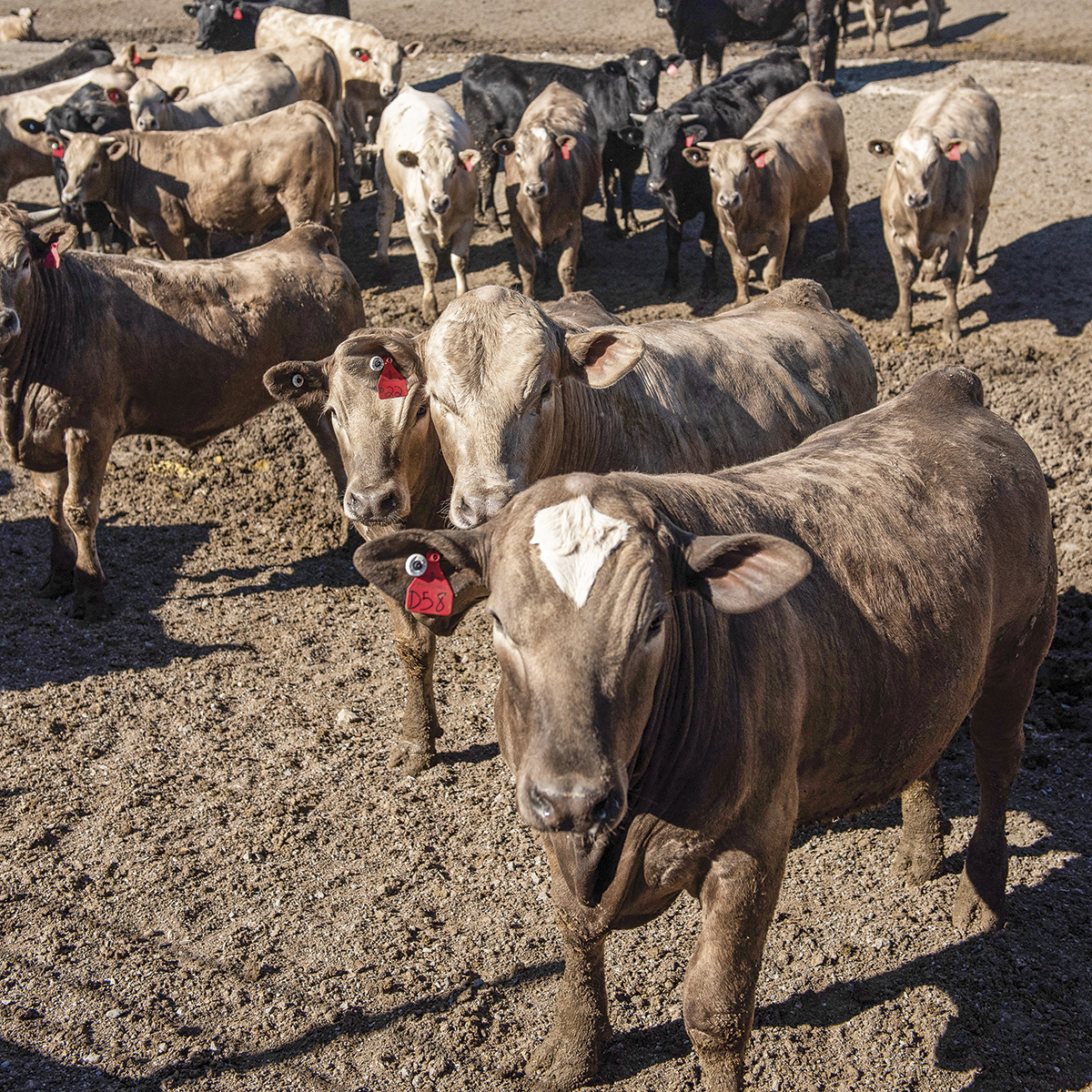Recently, I was awarded the honor of “Pennsylvania Dairy Innovator of the Year.” I jokingly said to the dairy group that nominated me, “Don’t tell my beef producers!” However, as cattle producers – beef or dairy – it is critical to remember that both our industries have the same end product: beef. This concept that all cattle contribute to beef production has never been more closely aligned than with the current growth in the mating of dairy cows to beef semen.
A brief history: In 2017, the devaluation of the Holstein bull calf resulted in the increased use of beef semen in dairy cows. The effectiveness of genomic selection and sexed semen technology has allowed the dairy industry to produce more valuable dairy replacement heifer calves with fewer matings; in turn, the dairy industry has aggressively bred cows with lower genetic potential to beef semen. The dairy industry initially had two priorities: Get the cow bred so she’ll produce milk, and add a bit of value to the enterprise through the sale of a black calf. Therefore, most of the calves produced on dairy farms during the first few beef-on-dairy cycles were black-hided. In addition, the dairy industry has continued to produce black-hided calves, capitalizing on those beef producers’ attitudes toward the key characteristic of Certified Angus Beef premiums, to drive mating decisions. Apart from getting the cow bred and producing a black-hided calf, however, dairies paid little attention to initial beef semen selection decisions.
To date, beef-on-dairy breeding strategies have driven a 6.56 million-unit increase of beef semen straws sold in the U.S. from 2017 through 2022 (from just 2.45 million to over 9 million). However, there remains very little publicly available data to allow cattle feeders and packers to make educated decisions on the value and management of these beef-on-dairy cattle. In addition, dairies are largely still relying on cheaper semen or the semen sales rep recommendation when making mating decisions. Therefore, instead of a genetically uniform group of predictable Holsteins to raise for beef, beef producers are left with a mishmash of genetics, unpredictable growth performance and unpredictable carcass performance in many cases.
I say “many cases” because there are certainly increasing attentions being afforded to the beef sires with characteristics that cattle producers would find desirable. In fact, many breed associations and semen companies are beginning to publish beef bull recommendations for dairy producers. However, given the relatively little public-facing data, one could question the accuracy of these bull recommendations. To date, the Angus-on-Holstein and Angus-on-Jersey terminal sire selection indices remain the most “freely available” picture of the selection process.
All this information tends to reflect the attitude of me, the author with a feedlot nutrition and management background. That attitude is probably fairly representative of a large portion of beef producers. To dig into the beginnings of these mating decisions or influence them, the dairy producer attitudes must be considered because the dairies are producing the calves. To date, there have been three regional surveys conducted to survey dairy producers’ attitudes toward beef-on-dairy matings. These surveys were conducted in Wisconsin (2018 and 2021), California (2019) and the Northeast (2021). The bulk of the information that follows are the findings from these three surveys because these three reported similar findings in dairy producers’ attitudes.
The majority of dairy farms are still selecting beef semen based on three key factors: conception rate, calving ease and semen cost. While these selection criteria ensure the optimal outcome for the dairy – milk production – they may not ensure the optimal outcome for the beef producer: efficient calves with good terminal characteristics. Depending on the region, between 70% and 90% of dairy farms are making these beef-on-dairy calves with Angus semen. However, as was stated earlier, there is a great deal of variation around beef sire selection, and many dairy farms are inseminating cows with more than one beef breed.

More than one-fifth of total beef production in the U.S. is supplied by the dairy industry. Photo by Michelle Kunjappu.
I have been conducting research on beef-on-dairy calves from birth through slaughter for the last four years at Penn State. Through this research, I have gotten to know the dairies supplying the calves very well. I questioned Doug Harbach of Shrack’s Dairy Farm about their reasons for using beef semen in their dairy cows.
“We use sexed Holstein semen in our top 30 percent of animals to make the number of replacement females desired to maintain herd size,” he says. “The remaining 70 percent of the herd is bred to [beef sires]. We have found it to be a win-win for us. We are accelerating the genetic potential of our Holstein herd while cashing in on additional income that the beef-on-dairy calves receive in the marketplace.”
Schrack’s view of beef-on-dairy is a perfect summation of the dairy industry currently. The value of beef-on-dairy calves currently surpasses the value of Holstein calves nearly 4 to 1. These economics cannot be denied.
However, can the 4-to-1 cost differential support the beef-on-dairy calf production long term? This is a question I have asked of several dairies this spring, and the responses have ranged from shoulder shrugs to all-out heated debates. Victor Cabrera published an article in 2022 in which he reported that “… economic value of using beef semen in dairy herds depends on the market value of calves [crossbred beef and dairy], market price of semen [beef, conventional and sexed], herd reproductive performance and semen combination strategies.” All that said, in the models that Cabrera ran in 2022, the break-even price for a beef-on-dairy calf was $69 to the dairy with exceptional fertility. Current calf prices in the Northeast exceed this price easily by $300 per head, the break-even price Cabrera quoted for calves produced on dairies with poor fertility. Thus, the current economics work very well for the dairy, but they may not be sustainable for the calf grower.
This is not to say the industries should abandon beef-on-dairy production systems. Currently, the U.S. dairy systems supply between 20% and 22% of our total beef production. For comparison, Sweden’s dairy system supplies 60% of that country’s annual beef production, and Finland’s dairy system supplies 80% of their beef production. Current estimations of beef-on-dairy supply predict nearly 5 million beef-on-dairy calves on feed annually. That would make these crosses alone worth roughly 20% of the annual fed cattle supply. Opportunities exist to increase the sustainability of both the beef cattle and dairy cattle industries through the use of beef-on-dairy crossbreeding. However, price points throughout the system need to favor the feeding and management of these calves from start to finish for those opportunities to be realized.











